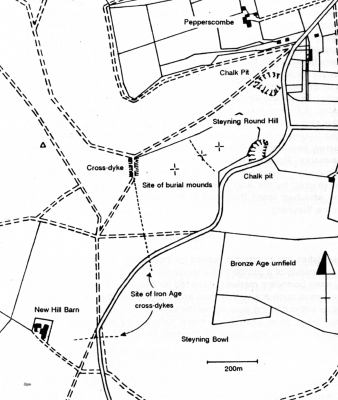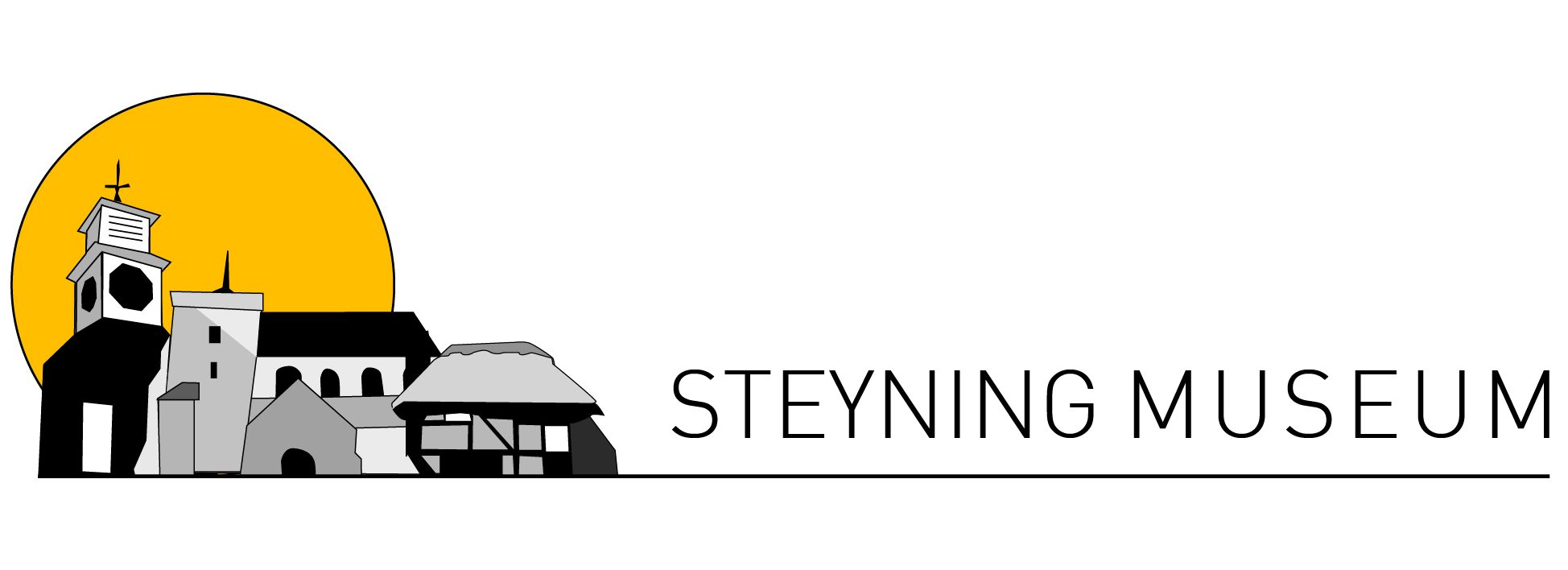
Ploughing on Steyning Round Hill destroyed the evidence of at least three round barrows in 1952. Modern farming methods, using deep ploughing, have accelerated the loss of our ancient heritage across the South Downs.
Fortunately, something was already known about Steyning Round Hill before 1952. One of the mounds was disturbed in 1826, when it was partly dug out to extract some flint. At the time it was reported that a skeleton emerged and was hastily reburied. Later, in 1949/50, archaeologists investigated nearby and identified a Bronze Age urn field burial site.
All this was confirmed by Steyning Grammar School Archaelogical Society during its excavation of the site during the years 1950 to 1952. The burial mound was described as low, 100 feet across and surrounded by a ditch. It is marked on the map above as the central burial mound, next to a cross-dyke. Many disturbed human bones were found. Pupils from the school also discovered part of a Bronze Age urn, Roman coins of the 4th Century AD and four buckles, one bronze and three iron.
Considered together, these finds suggest that there was a cemetery begun in the Bronze Age and that the burial site was used repeatedly for maybe two or three thousand years. Roman coins were either hidden or ritually placed in the grave and the buckles were Anglo-Saxon. Round barrows elsewhere were also in active use from the Bronze Age to Anglo-Saxon times.
The long barrows of the Neolithic seem to have had a similar purpose to the later round barrows. Building them must have employed vast efforts of labour but their cultural significance endured for up to five thousand years. Strangely, modern archaeology is still uncertain why they were built, given that some do not not contain burials, and what their prominent positions in the landscape might signify.
